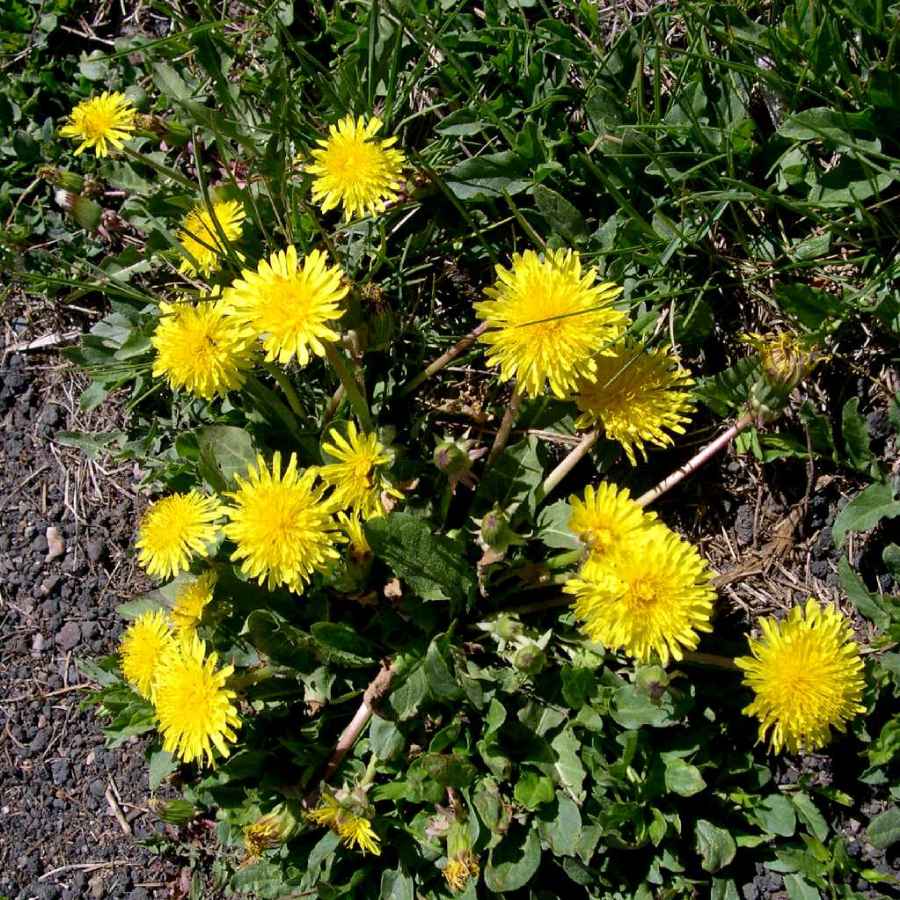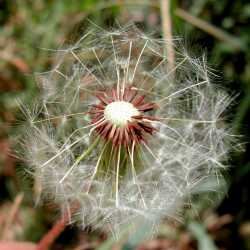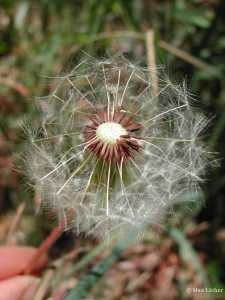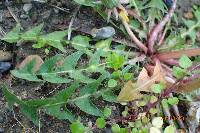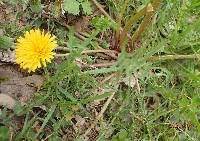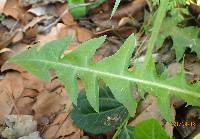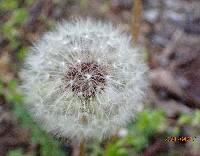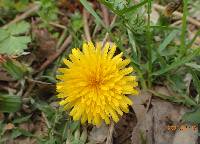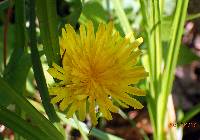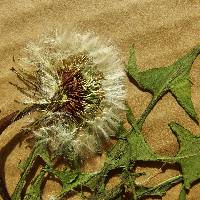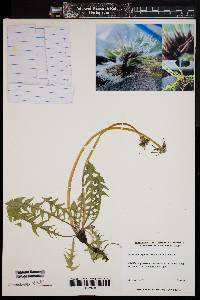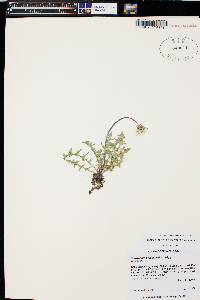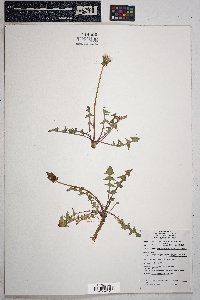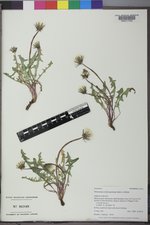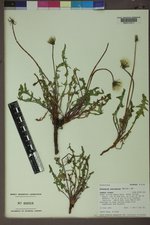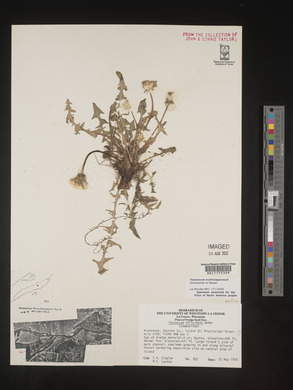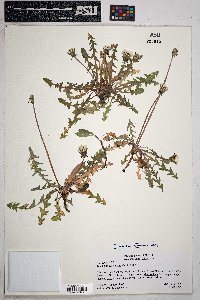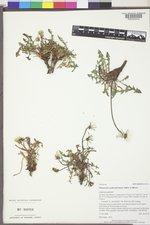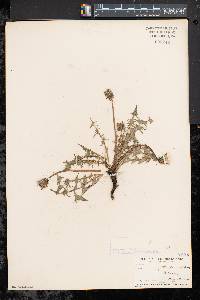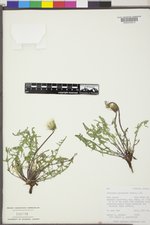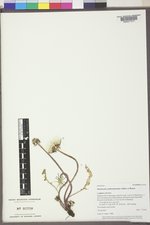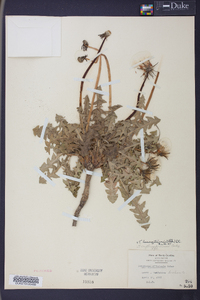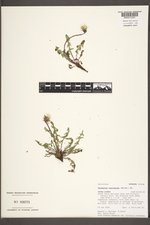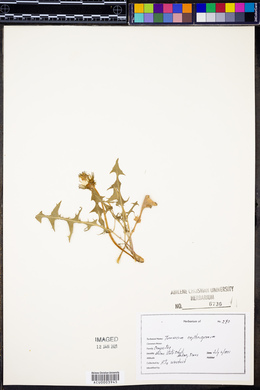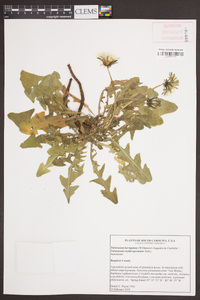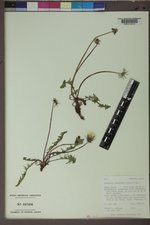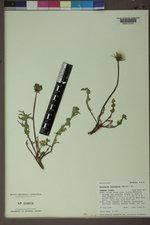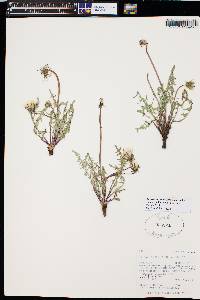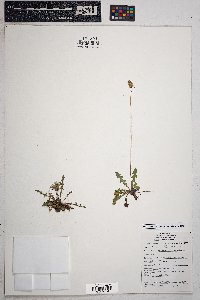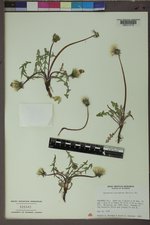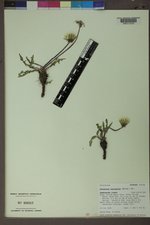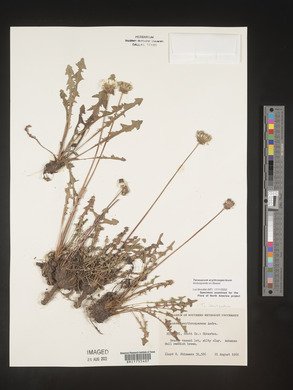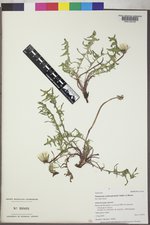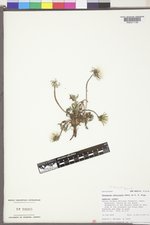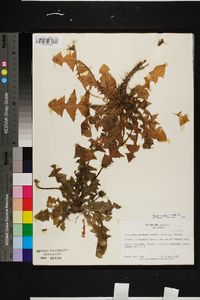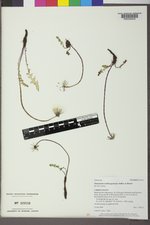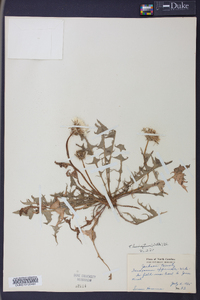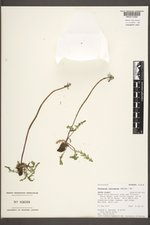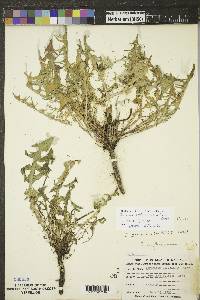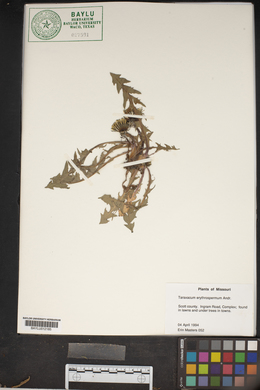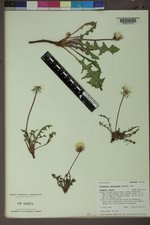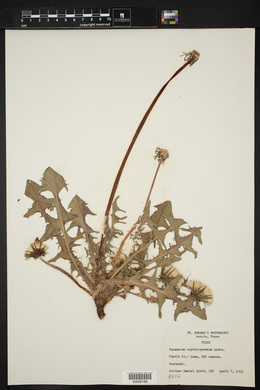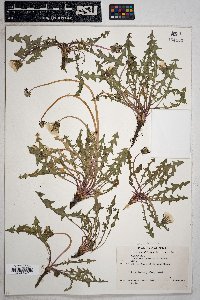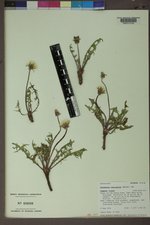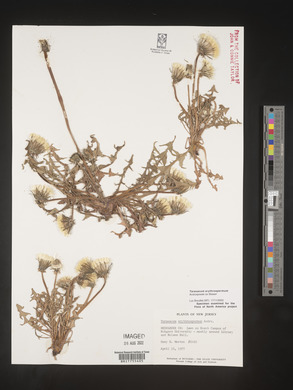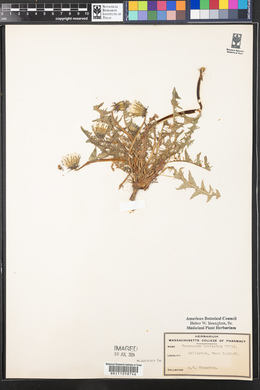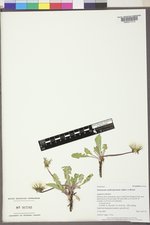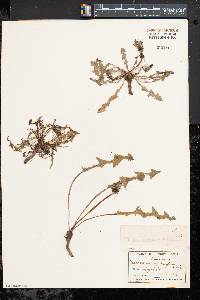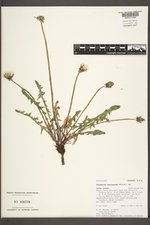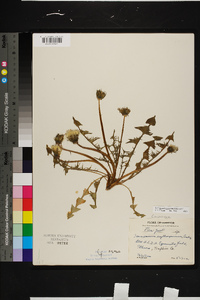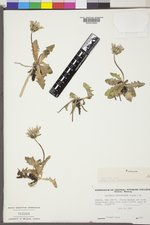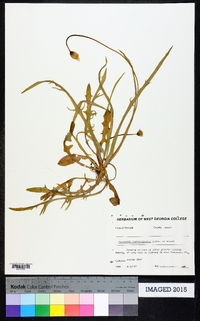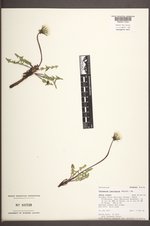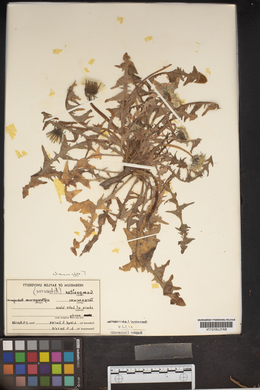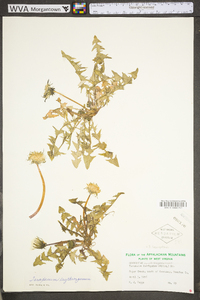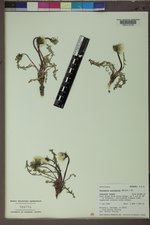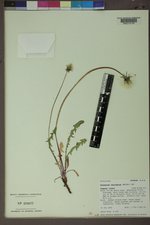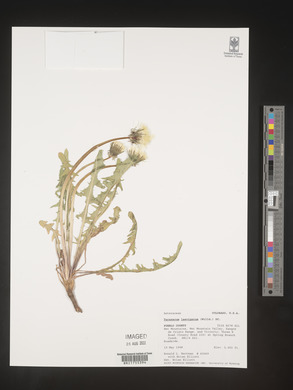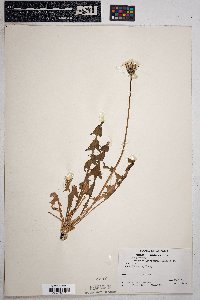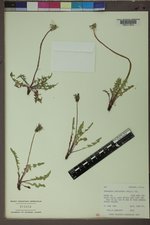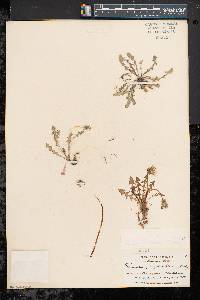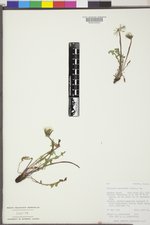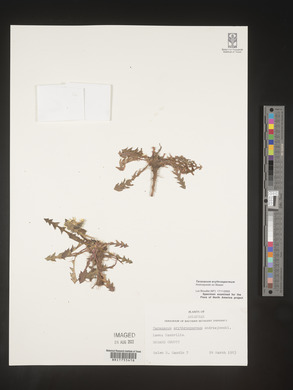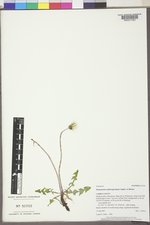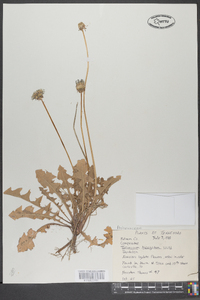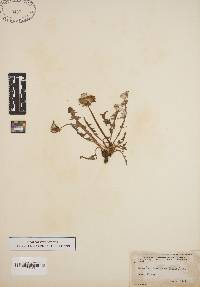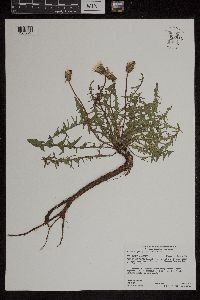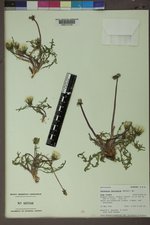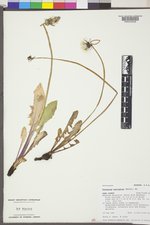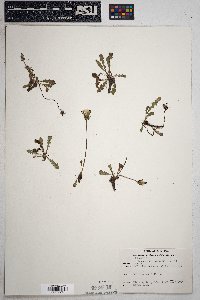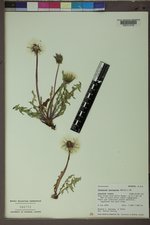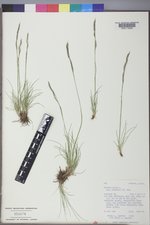Taraxacum erythrospermum
|
|
|
|
Family: Asteraceae
Red-Seed Dandelion, more...rock dandelion, red-seed dandelion, rock dandylion
[Taraxacum laevigatum (Willd.) DC.] |
Plants (1-)5-30(-60) cm; taproots seldom branched. Stems 1-15+, ascending to erect, pinkish to reddish, (± equaling foliage), glabrous or sparsely villous, usually more densely so distally. Leaves 20+, horizontal to erect; petioles ± slightly winged distally; blades obovate to oblanceolate (runcinate), 5-25 × 1-4 cm, bases attenuate, margins lacerate, lobes retrorse, triangular to nearly lanceolate, acute to long-acuminate, terminals about as large as distal laterals, teeth usually few, rarely 0, irregular, straight to retrorse, minute to pronounced or secondary lobules, apices usually acute or acuminate, sometimes obtuse, rarely rounded, faces glabrous or glabrate to sparsely villosulous (mainly midveins). Calyculi of 16-18, reflexed to recurved, sometimes glaucous or purplish, lanceolate bractlets in 2 series, 3.8-10 × 1-2 mm, margins white to purplish, narrowly scarious, apices acute or long-acuminate, erose, hornless. Involucres green, tips reddish gray, urceolate (closed) to cylindro-campanulate (open), 10-25 mm. Phyllaries 18-19 in 2 series, lanceolate-linear, 1.2-2.1 mm wide, margins scarious, slightly revolute at green edge, apices long-acuminate, erose-scarious, usually at least some horned. Florets ca. 70-75+; corollas sulphur yellow, outer with abaxial purplish or grayish stripe, 12-16 × 1-1.5 mm. Cypselae brick red to reddish brown or reddish purple, bodies oblanceoloid to obovoid, (2.2-)2.5-3(-4) mm, cones terete, 0.8-1.3 mm, beaks slender, (5-)7-8.5 mm, ribs ca. 15, sharp, faces proximally ± tuberculate (sometimes barely so) to conspicuously muricate in distal 1/2; pappi white to sordid, 4-7 mm. 2n = 16, 24, 32 (Europe). Flowering nearly year-round (except summer, south, to spring, north). Waste grounds, roadsides, lawns; 0-1500+ m; introduced; Alta., B.C., Man., N.B., N.W.T., N.S., Ont., Que., Sask., Yukon; Ala., Alaska, Ariz., Ark., Ga., Iowa, Maine, Mass., Mich., Miss., Nebr., N.J., N.Mex., N.C., N.Dak., Ohio, Okla., Oreg., Pa., Tex., Wash., W.Va., Wis., Wyo.; Europe; also introduced in Mexico. Early leaves of Taraxacum erythrospermum sometimes may be broadly winged along the midvein, making distinction from T. officinale difficult; usually, its later leaves become more deeply lobed with time. The name Taraxacum laevigatum has been used for L. erythrospermum in North America, following H. Handel-Mazzetti (1907). L. H. Shinners (1949) questioned that usage. The name is listed in the index of Flora Europaea (A. J. Richards and P. D. Sell 1973) as an unassigned synonym; it could be related to three different entities of sect. Spectabilia. And, it is not mentioned by other modern students of the group. Therefore, (1) given that the North American entity has not been identified with a particular Eurasian taxon; (2) to avoid using a microspecies name such as T. scanicum; and (3) despite the lack of typification of the name, I am using T. erythrospermum as a place holder until nomenclatural issues are resolved. This clearly associates the taxon with the section to which it belongs.
FNA 2006, Kearney and Peebles 1969, McDougall 1973 Duration: Perennial Nativity: Non-Native Lifeform: Forb/Herb General: Herbaceous perennials, to 30 cm tall or more, stems hollow, ascending to erect, pinkish to reddish, herbage glabrous or sparsely villous, usually more densely so distally, plants with milky sap. Leaves: Up to 25 cm long, obovate to oblanceolate and runcinate, deeply cleft into remotely spreading or reflexed lobes and many smaller, intermediate lobes, margins toothed to entire, short-petioled, the petioles slightly winged, the faces glabrous to sparsely villous, basal leaves in a basal rosette. Flowers: Heads ligulate, the florets 70-75 or more, the ligules yellow, 5-toothed at the apex, row of bracts around outer calyx of 16-18, reflexed to recurved, glaucous or purplish, lanceolate bractlets in 2 series, receptacles flat to convex, involucres 10-25 mm high, oblong to campanulate, phyllaries 18-19 in 2 series, the outer phyllaries short and reflexed or spreading, the inner phyllaries linear, attached near the tips, occurring in a single series, erect, heads solitary on naked, hollow, slender scapes. Fruits: Achenes red to red-purple, to 3 mm long, smooth below, with rough, sharp points above, fusiform to ovoid, 4-5 ribbed, the apex extended into a beak with copious soft, pale pappus bristles at the tip. Pappus white to tawny, 4-7 mm long. Ecology: Found in disturbed areas, roadsides, and lawns, from 3,000-12,000 ft (914-3658 m); flowering March-August, (year-round in some areas.) Distribution: Nova Scotia to British Columbia, south to Virginia, New Mexico, Arizona, and California. Notes: The inner phyllaries close after anthesis and the beaks of the achenes elongate, and finally the entire involucre reflexes, exposing the globular heads of fruit and creating the typical puff-ball. Look to the bright red or reddish-brown achenes, with relatively long, (but still small), sharp points near the apex of the achenes. This species is naturalized from Europe. Look for this species also under Taraxacum erythrospermum in newer sources. Ethnobotany: Unknown, but other species in the genera have uses. Etymology: Taraxacum is likely derived from Arabic through Persian or the work talkh chakok meaning bitter herb, while laevigatum means smooth or slippery or shining. Synonyms: Taraxacum erythrospermum, Leontodon laevigatus Editor: LCrumbacher 2011 Similar to no. 3 [Taraxacum officinale F. H. Wigg], often more slender; lvs generally very deeply cut for their whole length, the lobes narrow, the terminal lobe seldom much larger than the others; heads a little smaller; invol 1-2 cm, its inner bracts 11-13, often somewhat corniculate, the outer bracts appressed to reflexed, a third to a little over half as long as the inner; body of the achene becoming bright red or purplish-red or brownish-red at maturity, commonly somewhat rugulose below as well as muricate above, abruptly contracted into a cylindrical cusp just below the beak, the beak usually stramineous, 1/2-3 times as long as the body; 2n=16, 24, 32. Fields, pastures, lawns, and other disturbed sites; native of Eurasia, now established throughout most of n. U.S. and adj. Can., but much less common than no. 3. Mar.-Dec. (T. erythrospermum; Leontodon e.) Gleason, Henry A. & Cronquist, Arthur J. 1991. Manual of vascular plants of northeastern United States and adjacent Canada. lxxv + 910 pp. ©The New York Botanical Garden. All rights reserved. Used by permission. From Flora of Indiana (1940) by Charles C. Deam This species is frequent in northern Indiana and is possibly well distributed in sandy soils throughout the state. It prefers a more sandy soil than the preceding, although it is adaptive as to habitat. Found in habitats similar to those of Taraxacum palustre var. vulgare. …… Indiana Coefficient of Conservatism: C = null, non-native Wetland Indicator Status: N/A |
|
|
|

